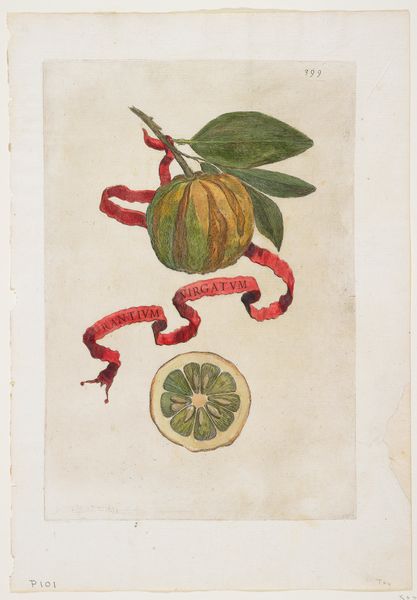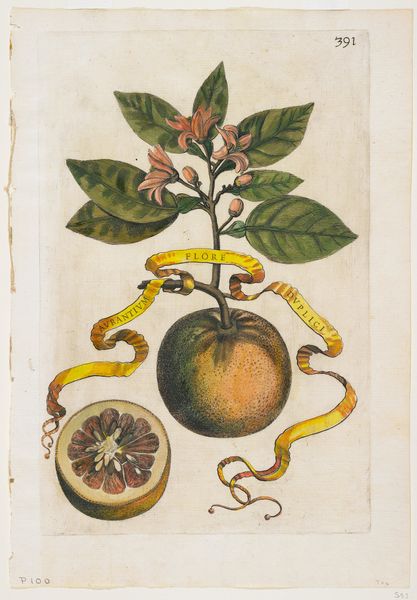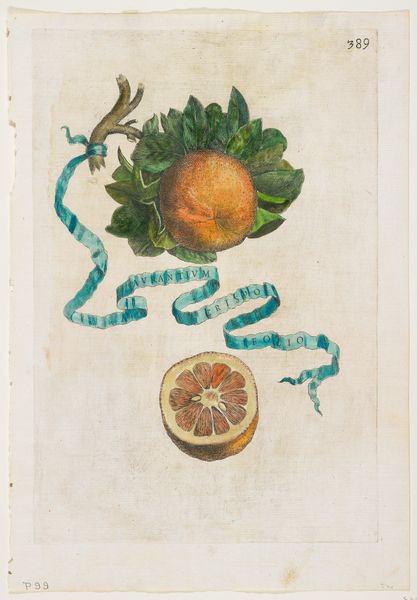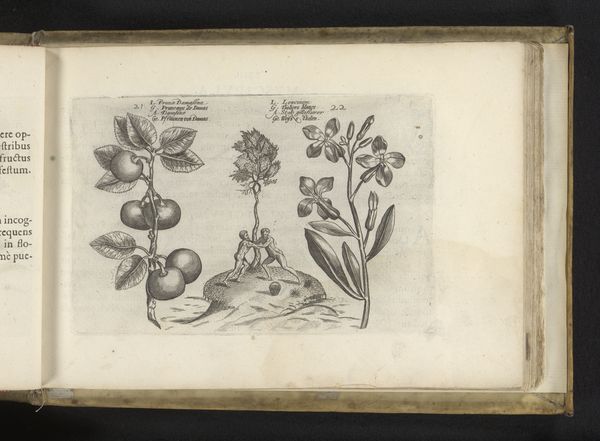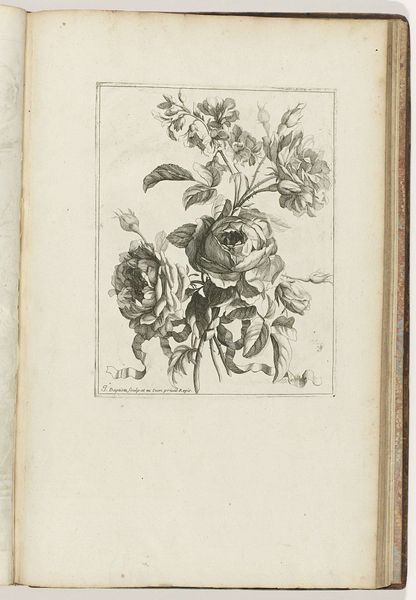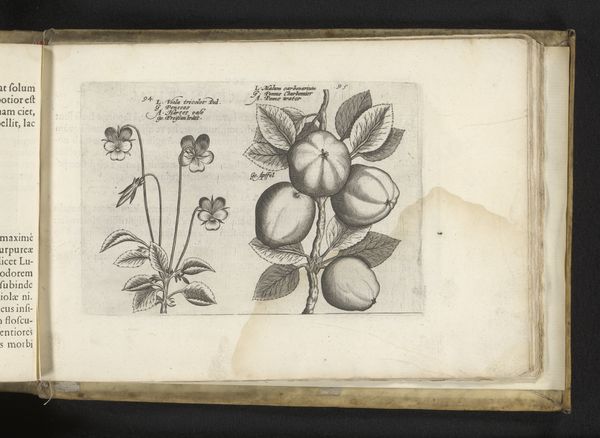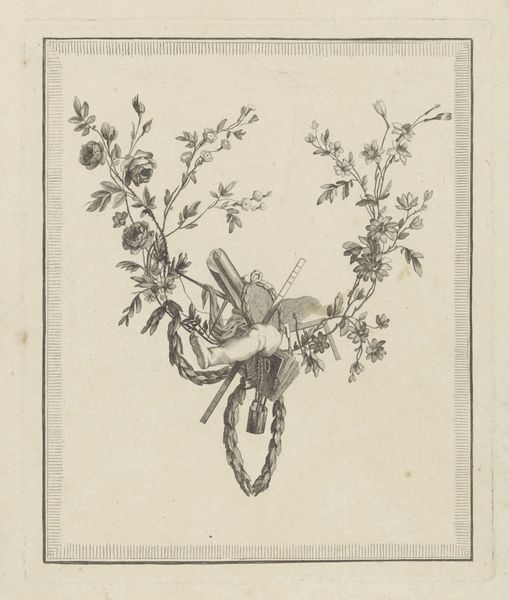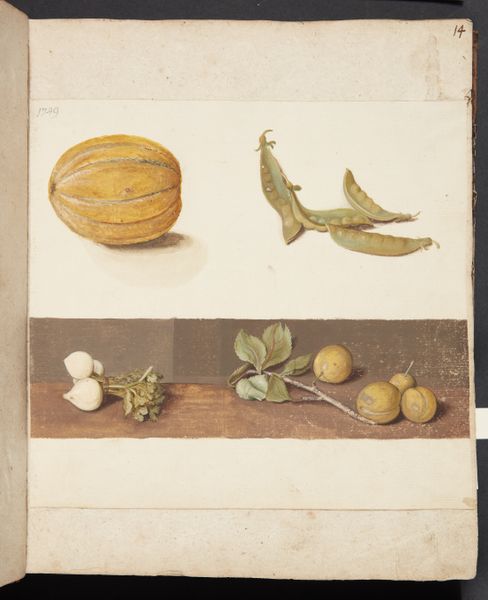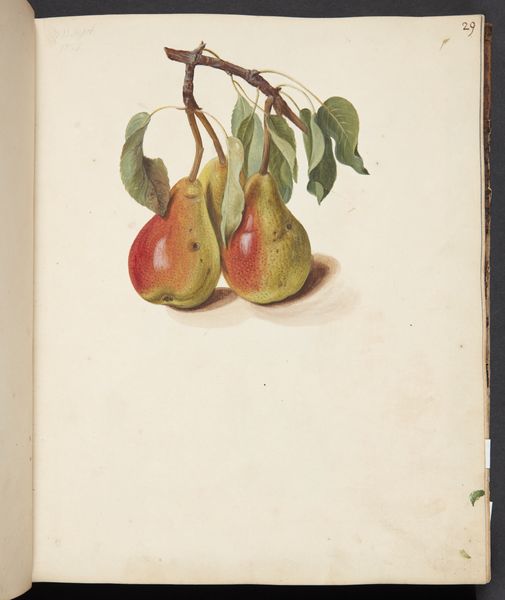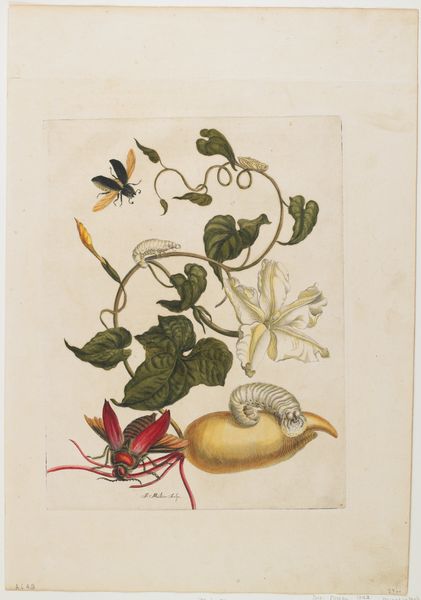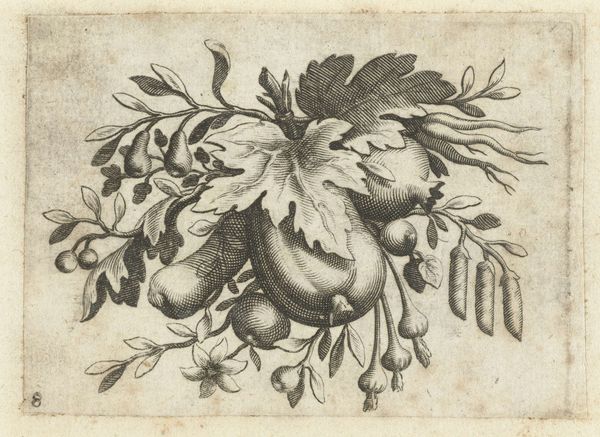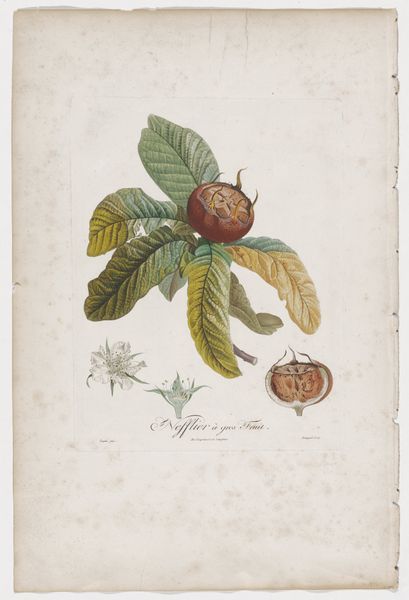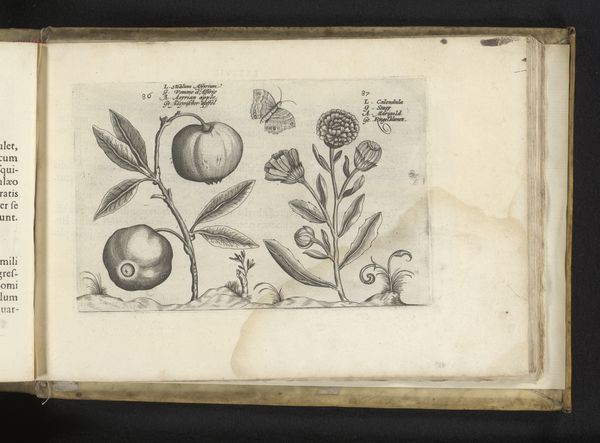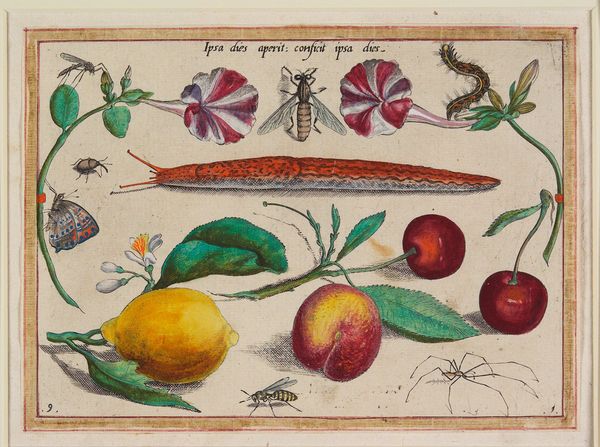
drawing, print, watercolor, engraving
#
drawing
# print
#
11_renaissance
#
watercolor
#
coloured pencil
#
watercolour illustration
#
engraving
#
botanical art
#
watercolor
Dimensions: 11 7/8 x 7 3/4 in. (30.16 x 19.69 cm) (plate)
Copyright: Public Domain
Giovanni Battista Ferrari made this print of a citrus fruit, Idem Aurantium Limonis Effigle, some time in the first half of the 17th century. As a Jesuit priest and botanist in Rome, Ferrari was deeply involved in the scientific culture of his day. His illustrated books, like "Hesperides sive de Malorum Aureorum Cultura et Usu," attempted to classify and celebrate the world of plants for a wide audience. The image here uses visual codes of the period by combining scientific observation with artistic flair, surrounding the lemon with decorative ribbons and presenting it almost as a specimen. Italy at this time was at the heart of botanical studies, often linked to powerful families and institutions like the Vatican. Ferrari’s work reflects a growing interest in natural history and its connections to social status and power. To understand this image better, we might explore the history of botanical illustration and the role of the church in the development of science. In doing so, we start to see art as contingent on cultural and institutional settings.
Comments
No comments
Be the first to comment and join the conversation on the ultimate creative platform.
